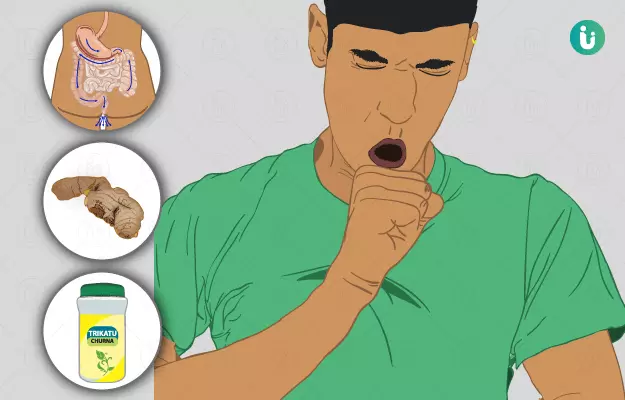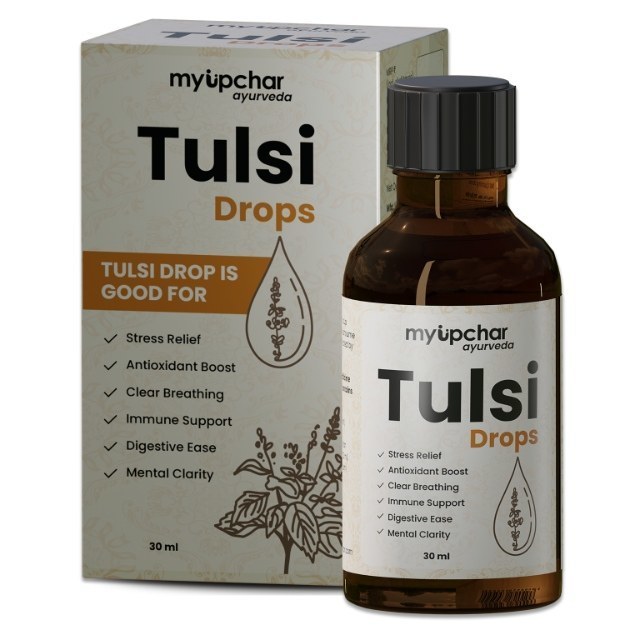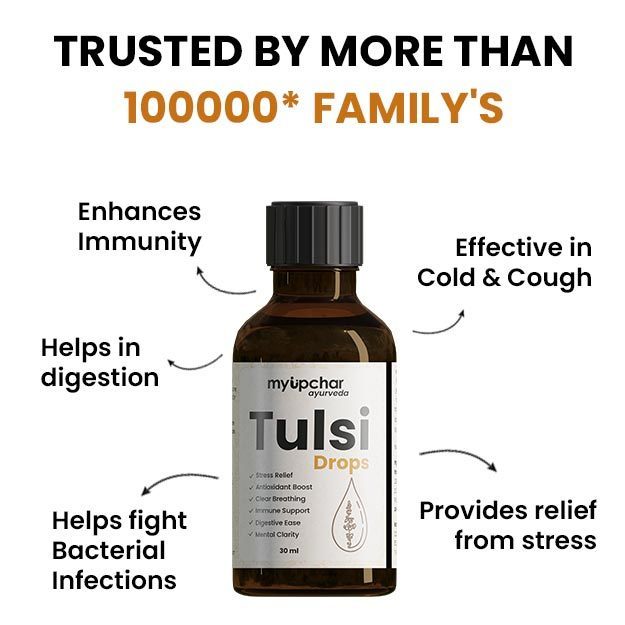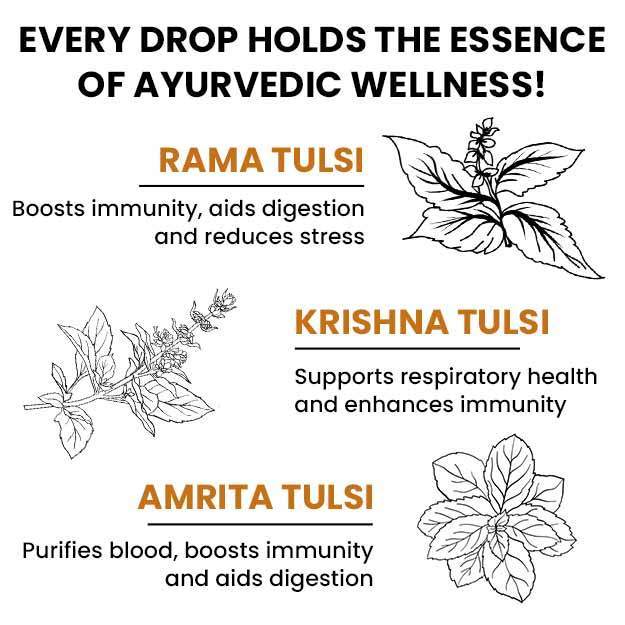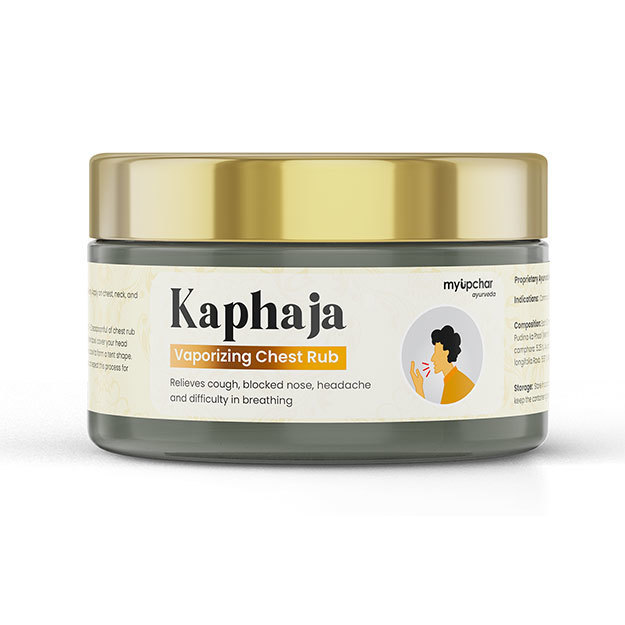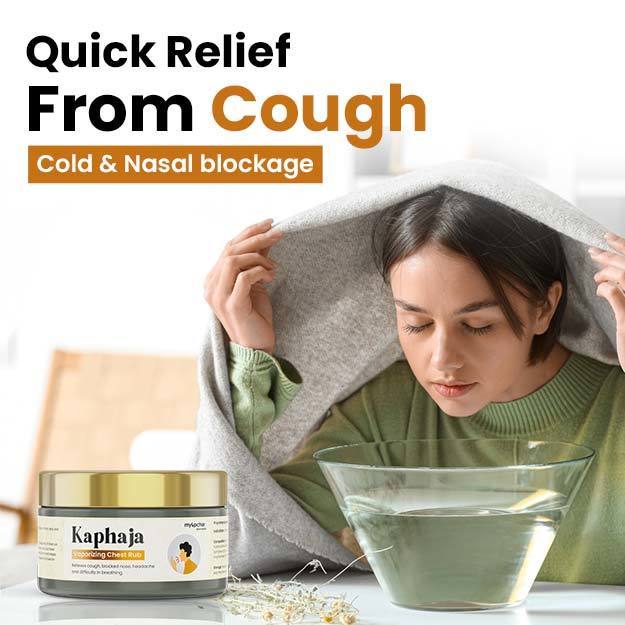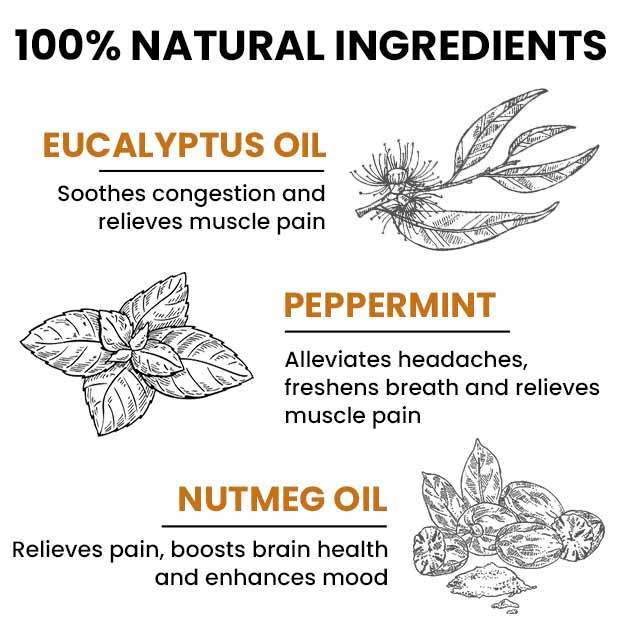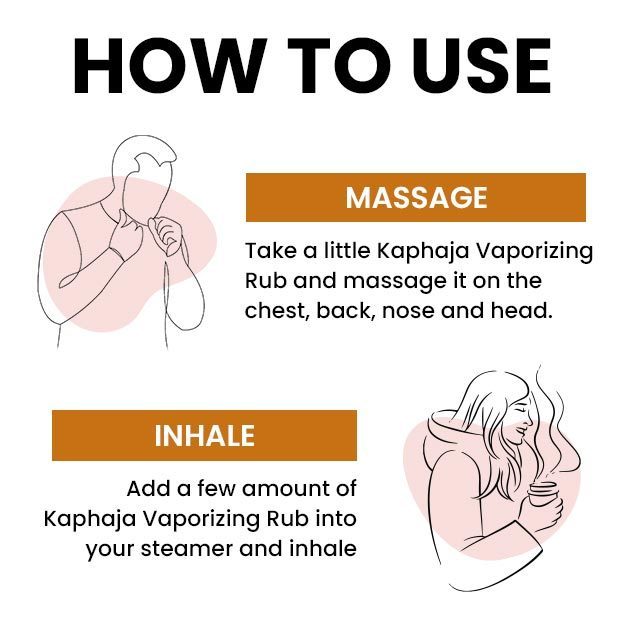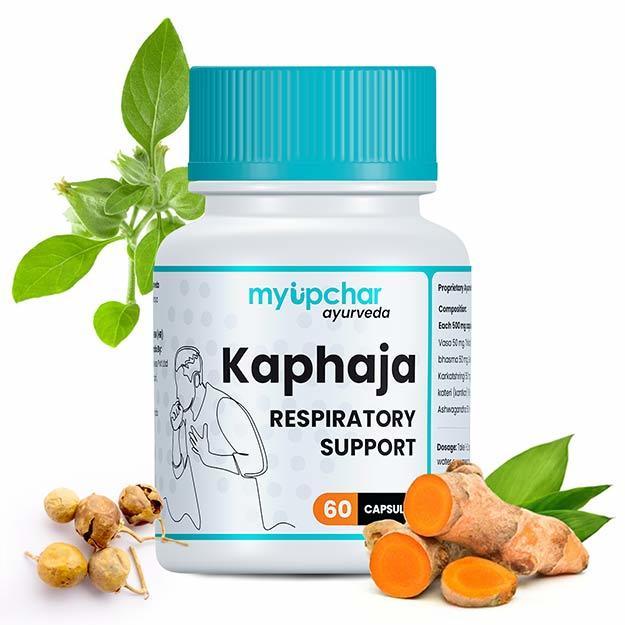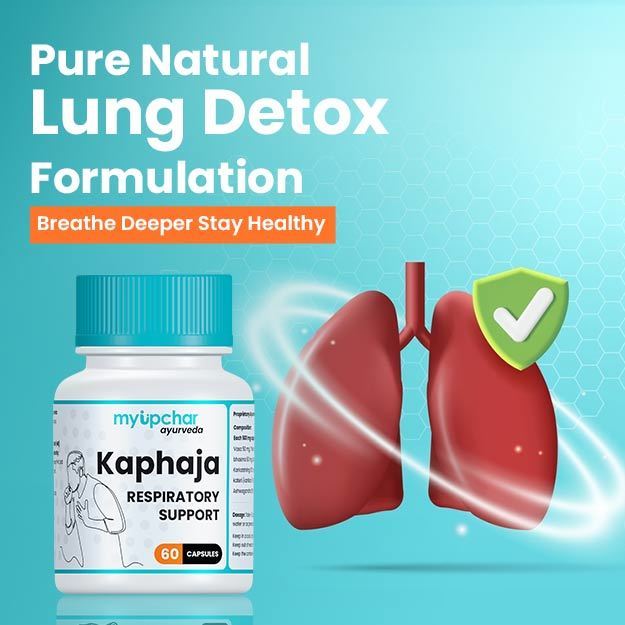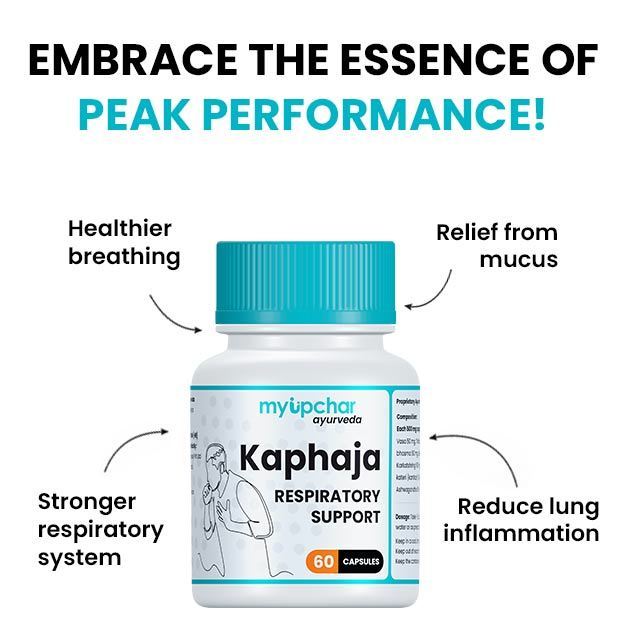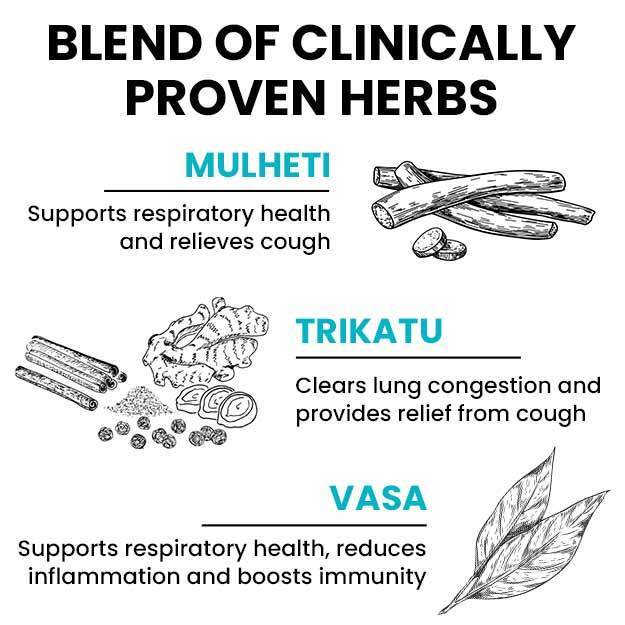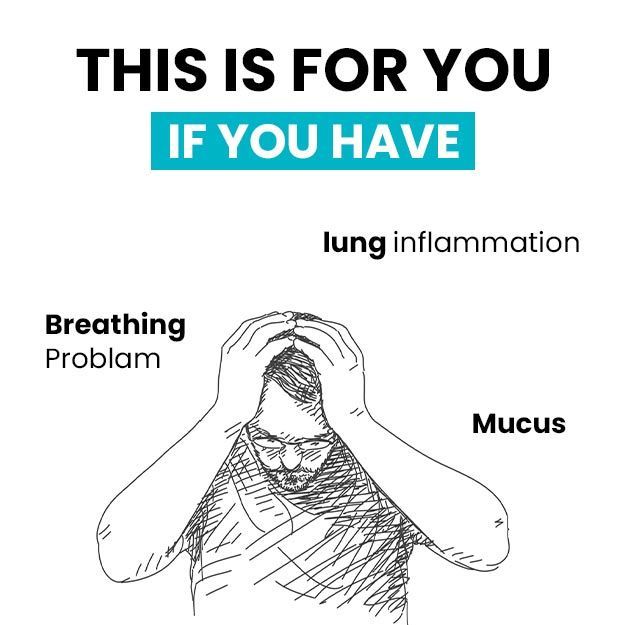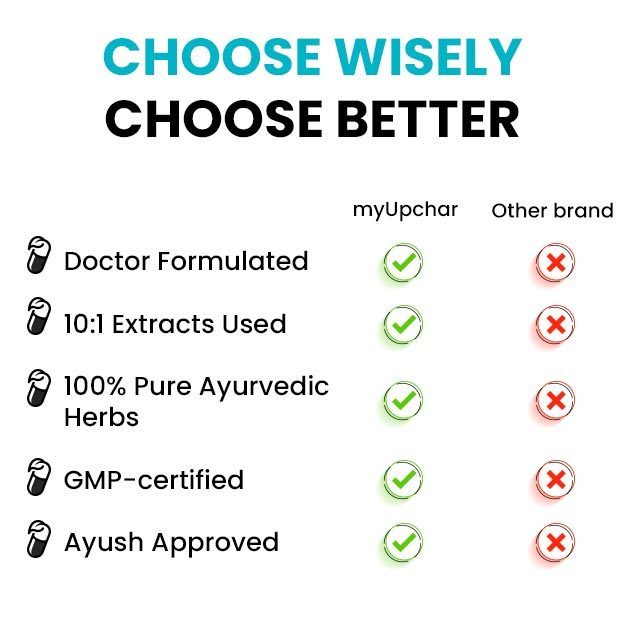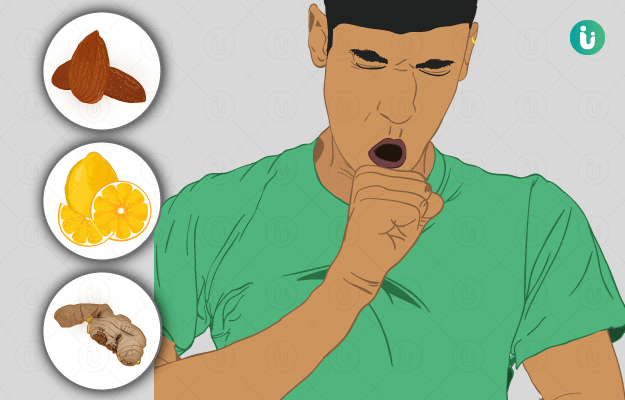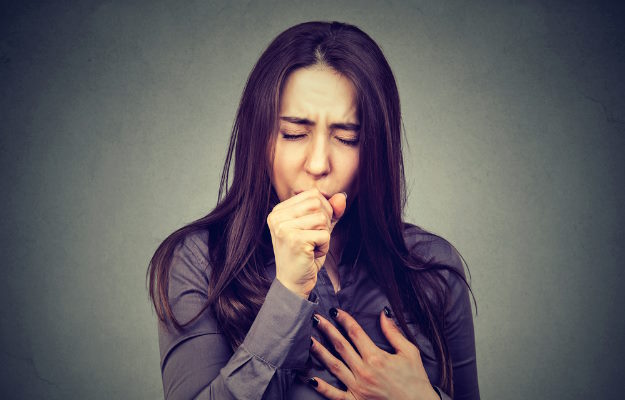Cough, also referred to as kasa in Ayurveda, is a condition that presents itself as an independent disorder or as a symptom of other diseases like bronchial asthma, tuberculosis, etc. Episodes of cough occur due to the continuous irritation of the respiratory tract.
The commonly prescribed treatments for cough in Ayurveda include snehana (oleation), vamana karma (medical emesis) and virechana karma (purgation therapy). Herbs and medicines used in the management of different types of cough include pippali (long pepper), adraka (ginger), yashtimadhu (liquorice), kantakari (chhoti katheri), tulsi (holy basil), amalaki (Indian gooseberry), vibhitaki (beleric myrobalan), vasa (Malabar nut), haridra (turmeric), sitopaladi churna, kantakari ghrita, kaphaketu rasa, eladi vati, pippalyadi vati and trikatu churna with honey.
- Ayurvedic view of cough
- Ayurvedic treatment for cough
- Ayurvedic herbs and medicines for cough
- Dietary and lifestyle changes for cough as per ayurveda
- How effective are ayurvedic medicines and treatments for cough
- Side effects and risks of ayurvedic medicine and treatments for cough
- Takeaway
Ayurvedic view of cough
As per Ayurveda, kasa originates in the stomach. The vitiated doshas are carried to the site of manifestation of disease, e.g., lungs or throat by naadis (channels). Kapha dosha is involved in the pathogenesis of cough. A cough is classified into five different types based on the involvement of the dosha – cough due to the vitiation of vata, pitta or kapha doshas and kshataja (caused by injuries) and kshayaja (caused by wasting syndrome) cough. Kshataja and kshayaja kasa involve the vitiation of all the three doshas.
Smoke, dust, over-exercise, unctuous food and repression of natural urges may lead to cough. Fasting and consumption of warm gruels such as that of barley are useful in management of cough. However, fasting should not be performed in kshataja and kshayaja cough. In these types, light foods like soup may be consumed to manage the condition.
Ayurvedic treatment for cough
- Snehana
- Snehana involves the application of warm herbal oils all over the body. The choice of oil for snehana depends on the dosha involved in a particular condition.
- The oil loosens and liquefies toxins and moves them into the gastrointestinal tract, from which they can be eliminated in the form of wastes from the body.
- This is a 3- to 7-day therapy in which medicated oils are used.
- Snehana is useful in treating cough in a wide range of population including children and elderly. It is helpful in managing diseases caused by all three doshas.
- It is not recommended in individuals with very weak or very strong digestion as well as in obese individuals.
- Vamana karma
- Vamana karma involves cleaning of the stomach and removal of the ama (toxins) from naadis (channels).
- In addition to cough, it is also useful in fever, diarrhoea, head and sinus diseases, pulmonary tuberculosis and skin diseases.
- Two types of herbs can be used to induce vomiting- herbs that induce emesis and herbs that enhance the effect of emesis-inducing herbs.
- As cough originates in the stomach, emesis can be useful by eliminating doshas from stomach. However, it should not be used in the management of kshataja (cough caused by injuries). It should also be avoided in kshayaja kasa. It is not recommended in pregnant women, children and elderly. Vamana karma should also be avoided in weak individuals, and individuals with heart diseases, high blood pressure, intestinal worms, urinary retention and an enlarged abdomen or spleen.
- Virechana karma
- It is one of the main panchakarma (five therapies) techniques that utilises purgatives like senna and rhubarb and aids in removing excess pitta from the gallbladder, liver and small intestine.
- It is also useful in the management of kapha disease as there is an excess of phlegm, fat and bile in these diseases.
- In addition to cough, it is also useful in treating many other conditions like chronic fevers, abdominal tumours and an distended abdomen.
Ayurvedic herbs and medicines for cough
Ayurvedic Herbs for Cough
- Pippali
- Pippali acts on the digestive, reproductive and respiratory systems and it possesses pain-relieving, expectorant, carminative and anti-helminthic properties.
- It is found to be useful in vata type of individuals and in the treatment of multiple conditions such as cough, asthma, bronchitis, cold, epilepsy, flatulence, gout and sciatica. Pippali is also useful in removing ama from the body.
- Pippali should be used with caution as it increases pitta in the body.
- Adraka
- Adraka acts on the digestive and respiratory systems and helps in the management of vomiting, sore throat, hoarseness and pain. It also serves as a digestive, carminative (reduces bloating) and expectorant (removes phlegm). It should be used with ghee for alleviating vata type of cough.
- It is a wonder drug that can be used with various other herbs for balancing all three doshas.
- Adrak should be used with caution in individuals with fever, bleeding disorders and ulcers as it aggravates pitta.
- Yashtimadhu
- Cough can easily be managed by using yashtimadhu with milk or in combination with other herbs.
- In addition to the management of cough, it can also be used in skin depigmentation, lightening of the skin, reducing acne, as an antimicrobial and anti-ageing herb.
- Liquorice should not be used continuously for more than 6 weeks as it causes side effects like hypertension, and sodium and water retention.
- Kantakari
- Kantakari is useful in the treatment of respiratory and reproductive disorders. It acts as a digestive, relieves flatulence, and is valuable in the management of cough due to its expectorant properties (expels phlegm).
- Kantakari can be used alone or with other herbs in the management of many conditions. It is used with honey to treat a chronic cough in children or with berry juice to treat a sore throat. A decoction of the root of this herb can be used with guduchi for relieving cough and fever.
- Tulsi
- Tulsi acts on the digestive, nervous and respiratory systems and has antibacterial, antiseptic and pain-relieving effects.
- It is useful in the management of different types of cough, including the one caused by tuberculosis, fevers, asthma, allergic bronchitis and sinusitis. Apart from this, it also improves memory and immune function and is helpful in managing cancer symptoms in the first stage.
- It should be used with caution in individuals with excess pitta.
- Amalaki
- Amalaki is a rejuvenator, useful in diseases caused by all doshas. It is a rich source of vitamin C, has antibacterial and anti-inflammatory properties. Amalaki prevents inflammation in the stomach and colon. Not only does it help relieve cough but also it improves overall health and helps in quicker recovery.
- Along with its use in the treatment of cough, it is used in the treatment of multiple other disorders such as eye and lung infections.
- Vibhitaki
- Vibhitaki is a rejuvenator that reduces kapha and pitta and elevates vata. It is primarily used in the management of kapha disorders like cough and bronchitis.
- In addition to cough, it is also used in lowering lipid levels throughout the body, especially in the liver and heart. It acts as a rejuvenator for vision, voice and hair.
- Vasa
- Although vasa acts on many systems of the body, it is one of the main herbs used to treat respiratory disorders.
- Vasa is useful in the management of cough, tuberculosis, asthma and bronchitis. It is also used in the treatment of urinary disorders, flu and all the kapha disorders.
- Haridra
- Haridra is useful for correcting disorders of digestive, circulatory, respiratory and urinary systems.
- In addition to the management of cough, haridra acts as a blood purifier and aids in blood tissue formation, provides relief from excess mucus production, helps heal skin disorders, indigestion and urinary tract diseases.
- It should not be used in case of acute jaundice and hepatitis and should also be avoided in case of excess pitta.
Ayurvedic Medicines for Cough
- Sitopaladi churna
- It is made of mishri (rock sugar), vanslochan (bamboo resin), chhoti pippali (a variety of long pepper), chhoti elaichi (green cardamom) and dalchini (cinnamon) in various proportions.
- It can be used in the management of fevers due to flu and respiratory disorders like cough. Symptoms of flu are relieved in the initial three to four days, and the condition is treated within 8 weeks.
- A headache may also occur with a cold when the excess kapha travels to the head. Sitopaladi churna is also useful in treating a headache caused by cold and cough.
- Kantakari ghrita
- The ingredients of kantakari ghrita are kantakari and guduchi. These herbs are considered beneficial in the management of cough.
- This ghrita is used for the treatment of chronic cough in children. Kantakari is useful in case of kapha diseases, and guduchi helps heal pitta diseases. However, due to its immunity-boosting effects, guduchi pacifies all three doshas.
- Kaphaketu rasa
- This is an organomineral preparation useful in the management of asthma, sinusitis, bronchitis, cough and other respiratory disorders.
- Shodhita (purified) vatsanabha (Indian aconite), shodhita tankana (borax), pippali, shankha bhasma (calcined preparation of conch) and adraka swarasa (ginger juice) are present in kaphaketu rasa.
- Kaphaketu rasa acts as an antihistaminic (acting against the chemical, histamine, that triggers an allergic reaction) and helps in the management of inflammatory kapha disorders like cough, bronchial asthma and sinusitis.
- Eladi vati
- Eladi vati is used in the management of many digestive and respiratory disorders like cough, bronchitis, inflammation of the throat and acts as a carminative and anti-inflammatory.
- It can be used in combination with vasarishta to treat cough and bronchitis.
- Pippalyadi vati
- Trikatu churna
- Trikatu churna helps in the management of cough and bronchitis when used in combination with honey. In addition to this, it is also used in digestive disorders primary for relieving flatulance since it acts as a carminative.
- In case of coma and drowsiness, the churna is mixed with water in a small quantity and instilled into the nostrils.
As treatments vary according to numerous factors and an individual’s prakriti (constitution), consult a qualified Ayurvedic doctor for the appropriate medications and treatments for your specific complaints.
Dietary and lifestyle changes for cough as per ayurveda
Do’s
- Include wheat, green gram and old rice in your regular diet.
- Include garlic, turmeric, ginger and pepper in your meals.
- Consume goat milk, honey and lukewarm water.
- Eat fruits like amalaki and draksha (grapes) regularly.
- Perform regular physical activity and breathing exercises like yoga and pranayama.
Don’ts
- Do not eat sweet and chilled food items.
- Do not include curd and mustard leaves in the diet.
- Do not drink contaminated water and avoid eating incompatible food items.
- Avoid exposure to cold and humid atmosphere and polluted environments like smoke, dust and fumes.
How effective are ayurvedic medicines and treatments for cough
A study involving 15 participants with bronchial asthma were treated using vamana karma. The clinical symptoms of the condition included cough, breathlessness and rhonchi. Ikshvaku ksheera yoga was used for vamana karma, and it was found that there was a significant improvement in all the three symptoms. The treatment removed vitiated kapha from the body and cleared the obstruction of vata, thus relieving symptoms and improving the condition.
In a clinical study, 30 participants with vataja kasa were treated using pippalyadi vati for a period of 14 days. Various parameters like hoarseness of the voice, chest pain and pain in the lateral sides of the chest, dry cough and headache were evaluated. A significant improvement in the condition of 70% of the participants was observed, indicating the effectiveness of pippalyadi vati.
Side effects and risks of ayurvedic medicine and treatments for cough
The herbs and medicines described above are being used since ancient times in the management of cough. Although these are all from natural sources and effective in the management of cough as an independent disease as well as a cough as a symptom of other diseases, improper use of these medicines may lead to side effects.
Use the treatments, combination medicines and herbs only after consulting a physician so they can evaluate the dosha dominance and prescribe the best-suited medication for your condition. For example, pippali and tulsi should be used with caution in individuals with pitta dominance and adraka should be used with caution in individuals with bleeding disorders and ulcers.
Takeaway
Cough is a prevalent symptom for a wide range of diseases including tuberculosis, bronchitis, allergy, etc. and can also occur as an independent condition. Appropriate management of cough is necessary to maintain a good quality of life. Ayurvedic doctors suggest remedies based on an individual’s dosha dominance and clinical condition. The treatments, herbs and medicines recommended by Ayurvedic physicians are being used since Vedic times and have proven effective in the treatment of cough. They help in uprooting cough and improving the quality of life.
Find Ayurvedic Doctor in cities
Doctors for Ayurvedic medicine, treatment and remedies for Cough

Dr. Ayush Bansal
Ayurveda
2 Years of Experience

Dr. Megha Sugandh
Ayurveda
6 Years of Experience

Dr. Nadeem
Ayurveda
3 Years of Experience

Dr.Ashok Pipaliya
Ayurveda
12 Years of Experience
References
- Shri Nilanjan Sanyal. Standard Treatment Guidelines in Ayurveda. Ministry of Health and Family Welfare, Department of AYUSH, Govt. of India
- Vaidya PB; et.al. Response to Ayurvedic therapy in the treatment of migraine without aura.. , U.S. National Library of Medicine; PMID: 20532095
- Dr.B B Joshi; et al. Anti-Histaminic Activity of Kaphaketu Rasa on Histamin Induced Bronhcospasm in Guinea Pigs. International Journal of New Technology and Research, October 2016, Pages 73-74
- HK; et al. Clinical efficacy of Kapha Ketu Rasa on Tamaka Swasa. Journal of Ayurveda and Integrated Medical Sciences, October 2016
- Arjyabrata Sarker. Toxical Studies of an Ayurvedic Medicine used in Cough. DOI: 10.13140/2.1.1794.4642. [internet].
- Khemchand Sharma; et al. Critical review of Ayurvedic Varṇya herbs and their tyrosinase inhibition effect. U.S. National Library of Medicine, PMID: 26600663
- Shweta G. Patil ; et al. Efficacy of Vamana Karma with Ikshvaku Ksheera Yoga in the management of Tamaka Shvasa (bronchial asthma). U.S. National Library of Medicine, PMID: 29861586

